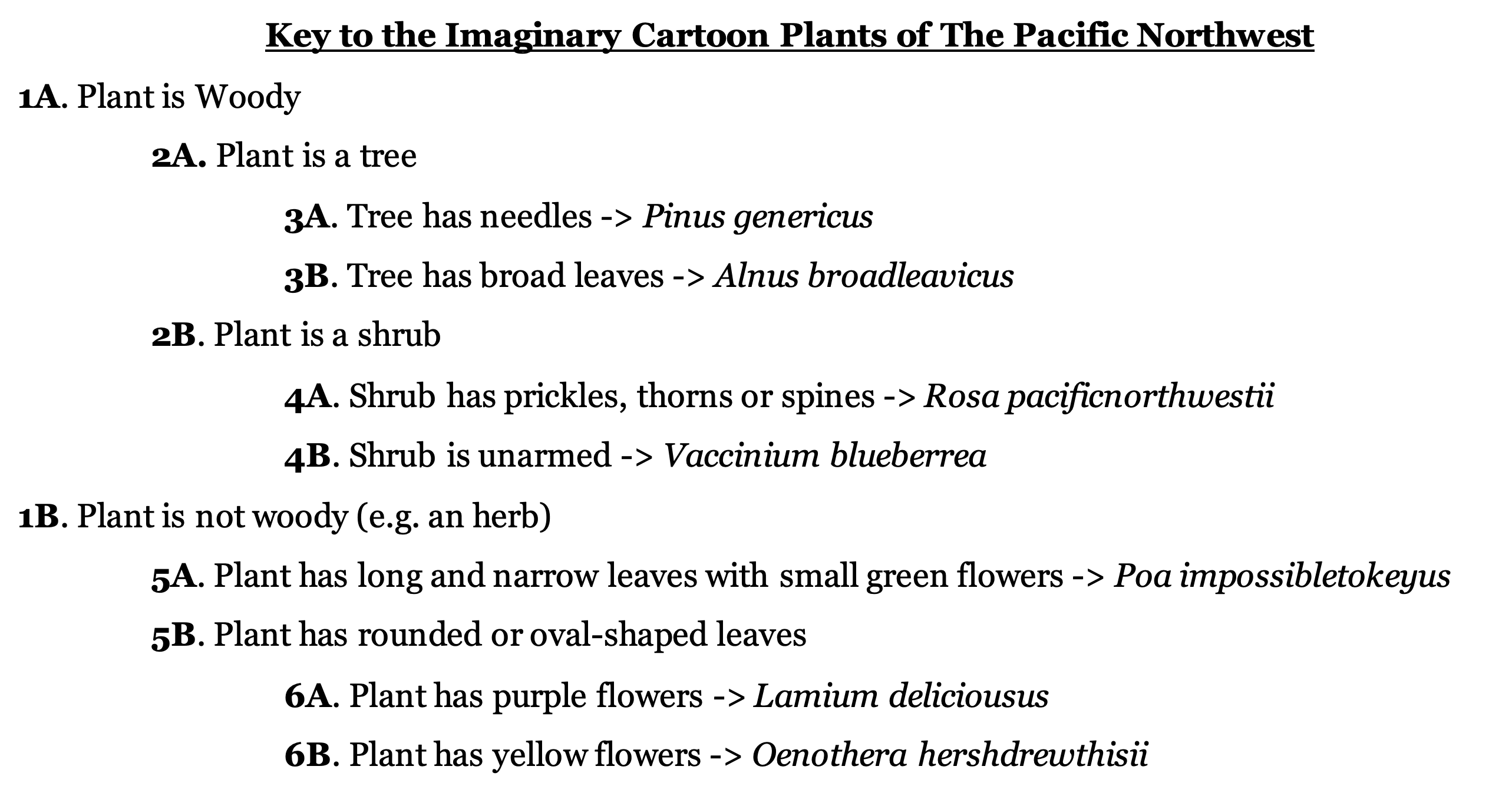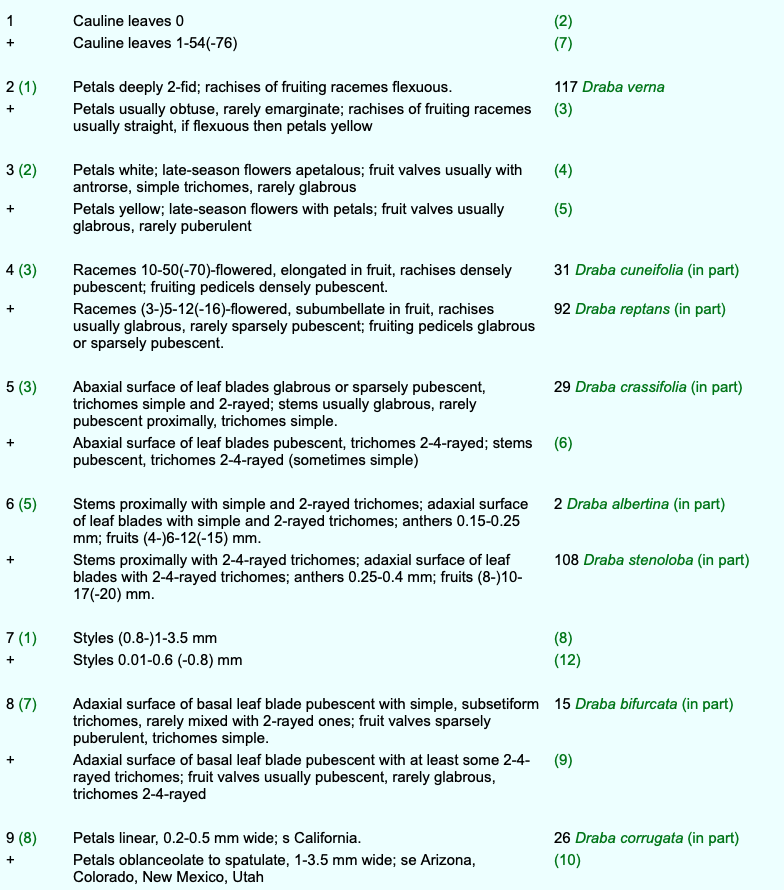
The use of dichotomous keys to identify species is an absolutely crucial aspect of taxonomy. In many cases, the only way to confirm a species’ ID is to wade through the key with a specimen in hand that has reproductive structures present (preferably flowers and fruits if identifying a plant) and some form of magnification (preferably a dissecting microscope, but a hand lens will do in a pinch). Some keys are simplified (as in many field guides for example), but most are extremely detailed and require the identifier to be familiar with a vast amount of morphological terminology.
While keys differ significantly depending on the focal organism, geographic region, and authors of the text, most keys are used in the same way. Keys are dichotomous, meaning that they are organized in an ever-expanding series of “couplets” (descriptions labelled e.g., 1A vs 1B) where you choose the option of the two that fits your specimen most closely. Once you choose a path, it will direct you to the next couplet (e.g. 2A vs 2B, though in some cases it will direct to skip over several couplets) where you will choose the best option, and so on and so forth. Eventually, you will reach the end of a path and have narrowed down a species. At this point, you can read the species description (and cross-reference other keys and lots of pictures) to make sure your ID is correct.
Test yourself using the cartoon key below. Can you identify plants A, B, and C using the imaginary key?


Of course, this is an overly simplified example of a dichotomous key. Below is an example of a more realistic excerpt from the key to the genus Draba (Brassicaceae) in the online Flora of North America.

As you can see, in order to navigate this key you’ll need to know the definitions of many strange sounding words, measure tiny plant structures, and differentiate between visual patterns that may make your head spin. Thankfully, most dichotomous keys provide illustrations and a glossary of terminology to aid your journey. When in doubt, reach out to your local herbarium or university to find an expert taxonomist to help you with your identifications.
